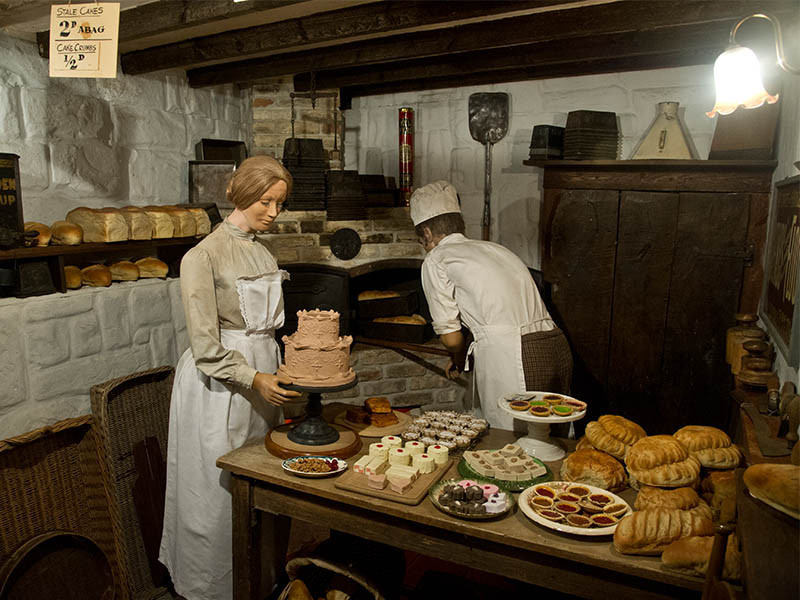From brown bread ice cream to the gruel described by Charles Dickens, we bring you seven of our favourite Victorian age recipes for you to try at home today. Bakeries in Victoria, Victoria Capital Regional District: Find Tripadvisor traveler reviews of Victoria Bakeries and search by price, location, and more. Victorian London - Professions and Trades - Food and Drink - Bakers. A MOVEMENT, as may be known, has lately been made towards meliorating the condition of the London operative bakers, which, from the following evidence of Dr Guy, laid before parliament, must be acknowledged to be bad enough. Victorian era White Block German 9 piece canister set. PINK BAKERY Canister - Vintage Ceramic Cookie Jar Kitchen Storage Container with Lid - Baking Baker. Victorian Bakers: Four modern bakers bake their way through the era that gave us modern baking as we know it - the reign of Queen Victoria. Experts Alex Langlands and Annie Gray join them to tell.
Food shopping, early 20th century
By the webmaster’s mother, 1906-2002

There were two bakers shops along Silver Street in my home town of Edmonton when I was a child in the early 1900s and both were owned by Germans which seems not to have been at all unusual in other towns.
Breyers Bakery
Two old photos of Breyers bakery, courtesy of the Scarff family, probably taken around the time when George Scarff (1889-1960) was the bakery delivery boy.
I well remember the baker whose name sounded to me like Brayer. His wife served in the front of the shop and he would come in from the back where he had been baking carrying a tray of loaves on his head. He was very fat. His wife never made conversation and her appearance was like that of so many women of the time: a long skirt, tight bodice, hair loosely taken away from her face and coiled onto the top of her head in a bun. She kept the bun covered with a white bun cover.
Information on Breyer's bakers from the 1911 census
The 1911 census shows that my mother's memory was absolutely right:
Christian Breyer, 45, master baker, was born Kupfernzel Germany and lived at 123 Silver Street, (presumably above his shop) with his wife Ellen Elizabeth Breyer, 49, born Devizes, Wiltshire. No children were recorded but two servants assisted with the business.
Ungerer's bakery

Information on Ungerer's bakers from the 1911 census
Note from the webmaster
The 1911 census again shows that my mother's memory was absolutely right:
Charles Ungerer, 43, baker and confectioner, a German resident, lived at 83 Silver Street with his wife Frances Ungerer, 37, born Pimlico, and their sons Christian, 13, born Southwark, Bernard, 9, born Southwark, Frank, 3, born Edmonton and Alice, 1, born Edmonton. Their daughter Amy, 5, was born in Edmonton. 83 Silver Street was part of the large houses in Pymmes Villas, so the family's shop must have been elsewhere in Silver Street.
Other Edmonton bakers from the 1911 census
Note from the webmaster
Victorian Bakery Hours
I am puzzled that my mother does not mention a third baker in Silver Street - Curnocks. According to the 1911 census, Alfred John Kurnock of Edmonton was born about 1856 in the city of London, and his son, Earnest Alfred Curnock, was born in Edmonton about 1884. The family was therefore trading before my mother was born and - as shown below - was also trading for decades afterwards.
Ungerer's baker's delivery hand cart courtesy of a family member who prefers to remain anonymous.
Charles Ungerer, who is understood to have had a strong German accent is on the left and the man on the right could be an assistant.
Note the shapes of the loaves that the men are holding, which were normal for the time.
There is another picture of a baker'sdelivery hand cart.

The name of the other German baker sounded like Hungerer. He had an assistant who helped in the shop and I have good reason to remember her. One day I went in there with my friends and on the counter was a large tray of homemade toffee, broken up for sale. One of my friends said, 'I dare you to take a piece'. It wasn't like me, but as nobody seemed to be around, I did. In a flash the assistant appeared and said, 'You can put that back.' and, 'I'll tell your father of you'. I was really scared because I thought she really would tell my father who was well known in Edmonton. He was an ambulance driver for the hospital and nephew of E G Cole who was chair of the Board of Guardians and owner of the local Pottery. In fact she never did tell on me, but I lived in fear for days.
Bakers' wares
Bakers did not make or sell cream cakes in those days. The two cakes that I associated with them were long oblong shortbreads with a cherry in the centre and something called rice cakes. These were very plain that had crystallised sugar sprinkled on top, again with a cherry in the centre. The bread was cooked in the bakery at the back of the shop. It was a lovely sight to see the baker come into the shop wearing a cap and white apron and carrying a tray of hot bread on top of his head, and the smell was wonderful. The bread was lovely, crusty and its tasty. Most of it was white; there was some brown but white was much more popular.
Bread makeweights
What happened to the left-over bread
Guest contribution
Any left over bread would be sold the next day as 'stale bread'. Once it got too hard to sell, it would go back to the bakery to be made into bread pudding or sold as 'crumb' to butchers to bulk out their sausages. My mother knew all the tricks of the bread trade.


Peter Johnson
During the 1914-18 war bread had to be sold by weight, rather than by loaf, so it had to be weighed. If the loaf was supposed to be two pounds, and it fell short, the shop had little squares of bread about two inches across that were called makeweights. Usually only one would ever be required. In those days when the children went to fetch the bread, it was quite normal for them to eat the makeweight on the way home.
The bakers dozen
Makeweights bring to mind the 'baker's dozen' which was 13 of a baker's wares given when the customer paid for only a dozen which was 12. The practice seems to have passed into disuse in the 20th century, unless you know differently.
Victorian Era Baking
Page based on the recollections and notes of the webmaster's mother (1906-2002) with additional research and editorial work by the webmaster
Victorian Era Bakery
Text and images are copyright
